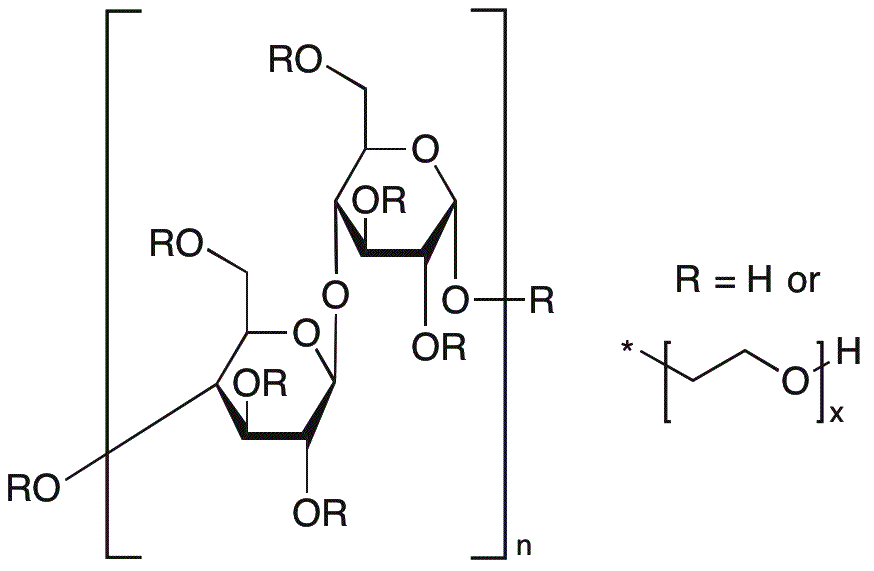Hydroxyethyl cellulose is widely utilized in research focused on:
- Pharmaceutical Formulations: It serves as a thickening and stabilizing agent in gels and ointments, enhancing the texture and delivery of active ingredients in topical medications.
- Cosmetic Products: Commonly found in lotions and creams, it improves the viscosity and provides a smooth application, making it ideal for skin care formulations.
- Food Industry: Used as a food thickener and emulsifier, it helps maintain the consistency and stability of sauces and dressings, contributing to better mouthfeel.
- Construction Materials: In cement and mortar, it acts as a water-retaining agent, improving workability and adhesion, which is crucial for construction applications.
- Textile Industry: Employed in textile sizing and finishing, it enhances the feel and durability of fabrics, making it valuable for manufacturers aiming for high-quality textiles.
General Information
Properties
Safety and Regulations
Applications
Hydroxyethyl cellulose is widely utilized in research focused on:
- Pharmaceutical Formulations: It serves as a thickening and stabilizing agent in gels and ointments, enhancing the texture and delivery of active ingredients in topical medications.
- Cosmetic Products: Commonly found in lotions and creams, it improves the viscosity and provides a smooth application, making it ideal for skin care formulations.
- Food Industry: Used as a food thickener and emulsifier, it helps maintain the consistency and stability of sauces and dressings, contributing to better mouthfeel.
- Construction Materials: In cement and mortar, it acts as a water-retaining agent, improving workability and adhesion, which is crucial for construction applications.
- Textile Industry: Employed in textile sizing and finishing, it enhances the feel and durability of fabrics, making it valuable for manufacturers aiming for high-quality textiles.
Documents
Safety Data Sheets (SDS)
The SDS provides comprehensive safety information on handling, storage, and disposal of the product.
Product Specification (PS)
The PS provides a comprehensive breakdown of the product’s properties, including chemical composition, physical state, purity, and storage requirements. It also details acceptable quality ranges and the product's intended applications.
Certificates of Analysis (COA)
Search for Certificates of Analysis (COA) by entering the products Lot Number. Lot and Batch Numbers can be found on a product’s label following the words ‘Lot’ or ‘Batch’.
Numéro de catalogue
Numéro de lot/série
Certificates Of Origin (COO)
This COO confirms the country where the product was manufactured, and also details the materials and components used in it and whether it is derived from natural, synthetic, or other specific sources. This certificate may be required for customs, trade, and regulatory compliance.
Numéro de catalogue
Numéro de lot/série
Safety Data Sheets (SDS)
The SDS provides comprehensive safety information on handling, storage, and disposal of the product.
DownloadProduct Specification (PS)
The PS provides a comprehensive breakdown of the product’s properties, including chemical composition, physical state, purity, and storage requirements. It also details acceptable quality ranges and the product's intended applications.
DownloadCertificates of Analysis (COA)
Search for Certificates of Analysis (COA) by entering the products Lot Number. Lot and Batch Numbers can be found on a product’s label following the words ‘Lot’ or ‘Batch’.
Numéro de catalogue
Numéro de lot/série
Certificates Of Origin (COO)
This COO confirms the country where the product was manufactured, and also details the materials and components used in it and whether it is derived from natural, synthetic, or other specific sources. This certificate may be required for customs, trade, and regulatory compliance.


